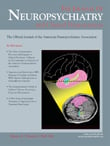SIR : Intractable hiccups (IH) are defined as hiccups that last longer than a month, and may develop in the context of many medical and neurological conditions.
1,
2 The mechanics of hiccups (also referred to as “hiccoughs” or “singultus”) involve the repeated involuntary, spasmodic contraction of the diaphragm and accessory muscles of inspiration, followed by a sudden closure of the glottis, blocking the entry of the inspired air into the trachea, and resulting in the characteristic “hiccup” sound. Although uncommon, IH are a potentially disabling condition that interfere with breathing, speech, and swallowing, and may become a source of significant distress for affected individuals.
1 When distressing or disabling enough to merit intervention, IH may be treated effectively with typical antipsychotics, muscle relaxants, anticonvulsants, opiates, antidepressants, or stimulants.
3 Although traumatic brain injury (TBI) produces a litany of neurological problems, including seizures, headaches, vestibular dysfunction, and sensorimotor impairments,
4 there are no reports describing IH as a consequence of TBI at the time of this writing. We describe the first case report of IH following TBI and its effective treatment with olanzapine.
Case Report
A previously healthy 20-year-old male suffered a severe traumatic brain injury after a motor vehicle accident. Following extubation, approximately 2 weeks post-injury, the patient remained encephalopathic and agitated and developed IH. Low doses of haloperidol and lorazepam were used to treat agitation; these agents failed to afford adequate relief of not only this symptom but also his hiccups. Upon changing the treatment to a regimen of olanzapine, 2.5 mg daily, both agitation and hiccups were reduced substantially.
On admission to acute rehabilitation, 22 days post-injury, the olanzapine regimen was changed from scheduled to “as needed.” IH recurred approximately 24 hours later. In addition to this symptom, neuropsychiatric evaluation at that time identified encephalopathy, agitation, visual and auditory hallucinations, reduplicative paramnesia, left-sided neglect, and severe sialorrhea. We initiated treatment with olanzapine, 7.5 mg daily, to target agitation and psychotic symptoms, and metoclopramide, 10 mg daily, to target sialorrhea and hiccups.
Agitation, psychotic symptoms, hiccups, and sialorrhea improved over the next week. By the fifth day of rehabilitation, hiccups and sialorrhea had resolved completely; metoclopramide was discontinued at that time. Neither hiccups nor sialorrhea recurred after discontinuing this medication. Persistent encephalopathy and functional impairments were then treated with a regimen of donepezil, 5 mg daily; this treatment improved these problems substantially over the following week and throughout the remainder of his acute rehabilitation stay. Persistent psychotic symptoms at rehabilitation day 22 prompted an increase in the dosage of olanzapine to 10 mg daily. The patient’s encephalopathy, psychotic symptoms, IH, sialorrhea, and functional impairments remained effectively treated with a regimen of donepezil, 5 mg daily, and olanzapine, 10 mg daily.
The authors tapered olanzapine over rehabilitation days 26 to 29 in order to ascertain the necessity of continued treatment with this medication in preparation for the patient’s discharge from acute rehabilitation. After reducing his olanzapine treatment to 2.5 mg daily, both psychotic symptoms and IH recurred. However, these symptoms were regarded as tolerable by the patient and the staff reported them to be without significant functional import. Approximately 1 week after a trial discontinuation of olanzapine, the patient and staff reported worsening of his hiccups and recurrence of auditory hallucinations. We began a regimen of olanzapine again, at 2.5 mg daily, resulting in improvement in his psychotic symptoms and remission of IH.
Comment
Treatment with olanzapine afforded relief of psychotic symptoms and IH during the period of acute rehabilitation after severe TBI. Although the pharmacological interventions afforded to this patient were complex, including concurrent prescription of metoclopramide and donepezil, the frequency and severity of this patient’s IH appear to have varied only as a function of increases or reductions of olanzapine: discontinuation of metoclopramide did not influence this patient’s IH, and this symptom recurred during monotherapy with donepezil. By contrast, this patient’s IH remitted during treatment with olanzapine, and recurred during each reduction to doses of less than 2.5 mg of olanzapine daily.
IH appear to result from disruption of corticobulbar and supraspinal reflex arcs regulating respiratory function, as well as the modulatory neurotransmitter inputs into these reflex arcs.
3 The principal CNS neurotransmitters responsible for both the generation and transmission of respiratory rhythm are glutamate, gamma-aminobutyric acid, and glycine.
5 Additionally, catecholaminergic and serotonergic afferents modulate the function of that reflex arc.
6 Successful treatment of IH may therefore employ agents that target one or more of these systems, whether at the level of the reflex arcs or at the level of their modulatory inputs.
3Although the pharmacology of olanzapine is complex,
7 among its major effects is antagonism of multiple types of postsynaptic serotonergic receptors.
8 The most consistently demonstrated effect of serotonin on the reflex arcs involved in the generation of hiccups is at the level of the spinal cord, where serotonergic input augments phrenic motoneuronal activity.
5,
6 We propose that olanzapine, by antagonizing these postsynaptic serotonergic receptors, may decrease phrenic motoneuron excitability and thereby reduce hiccups. Further investigation of the therapeutic mechanisms and potential role of atypical antipsychotics, and in particular the activity of atypical antipsychotics at serotonergic receptors, in the treatment of IH is needed.

